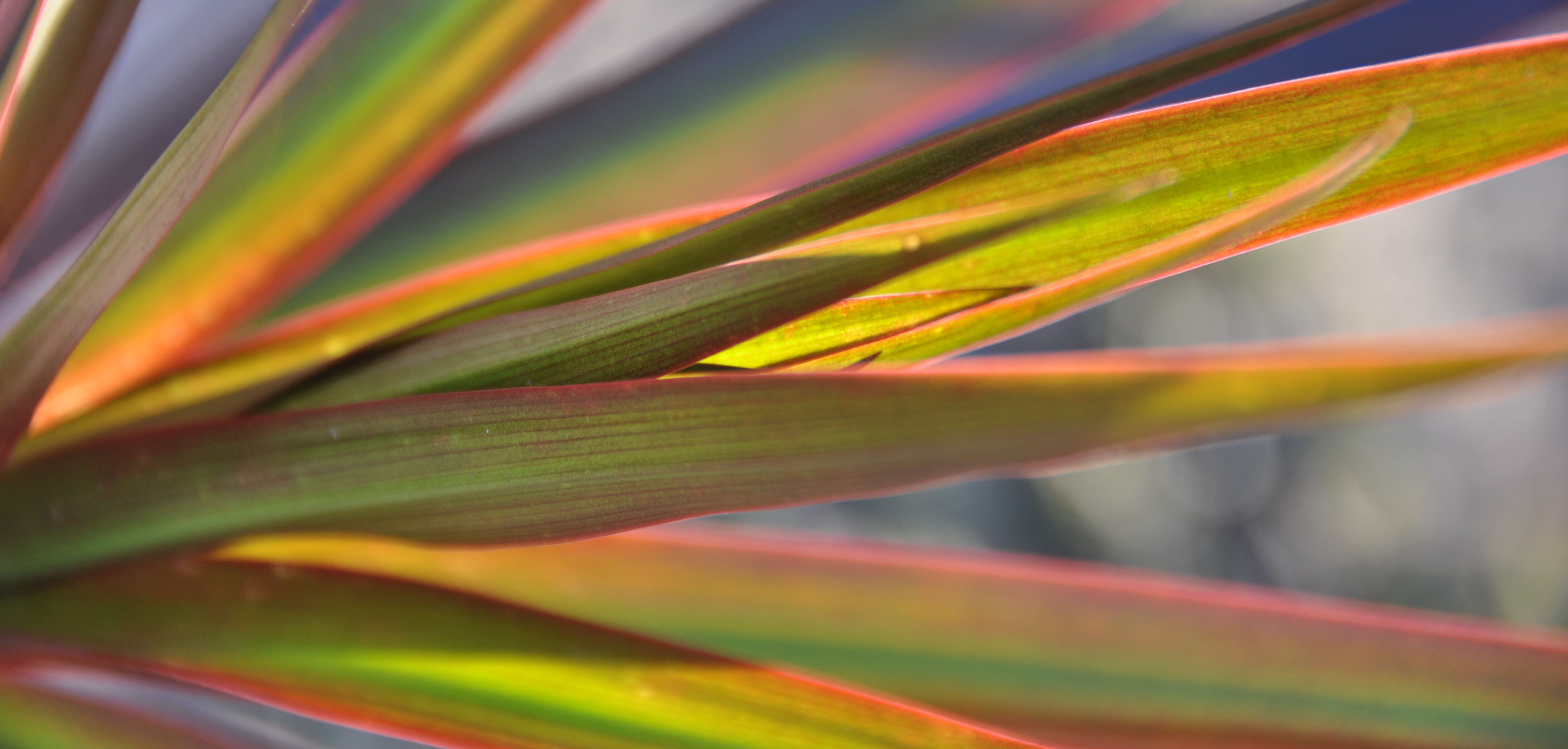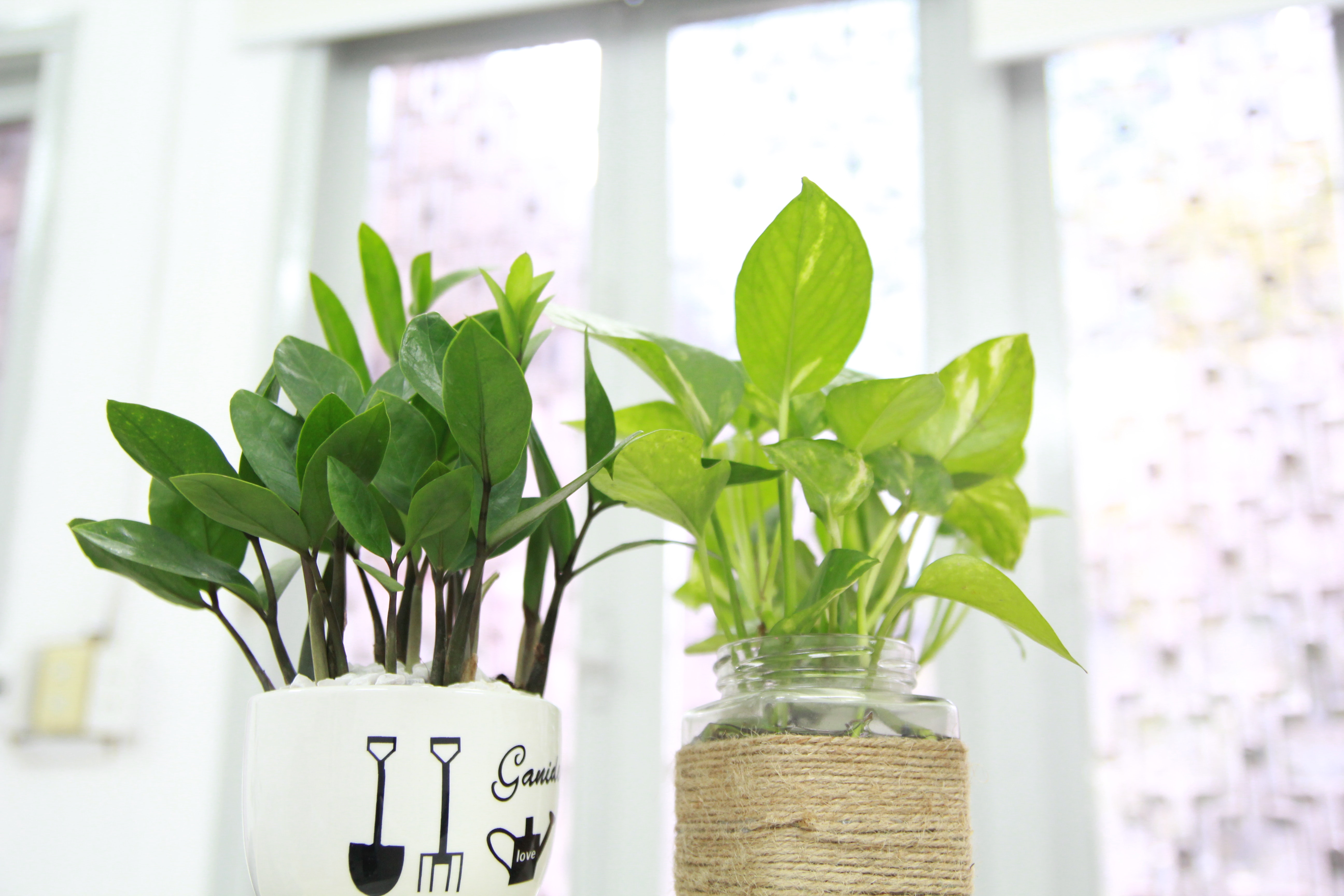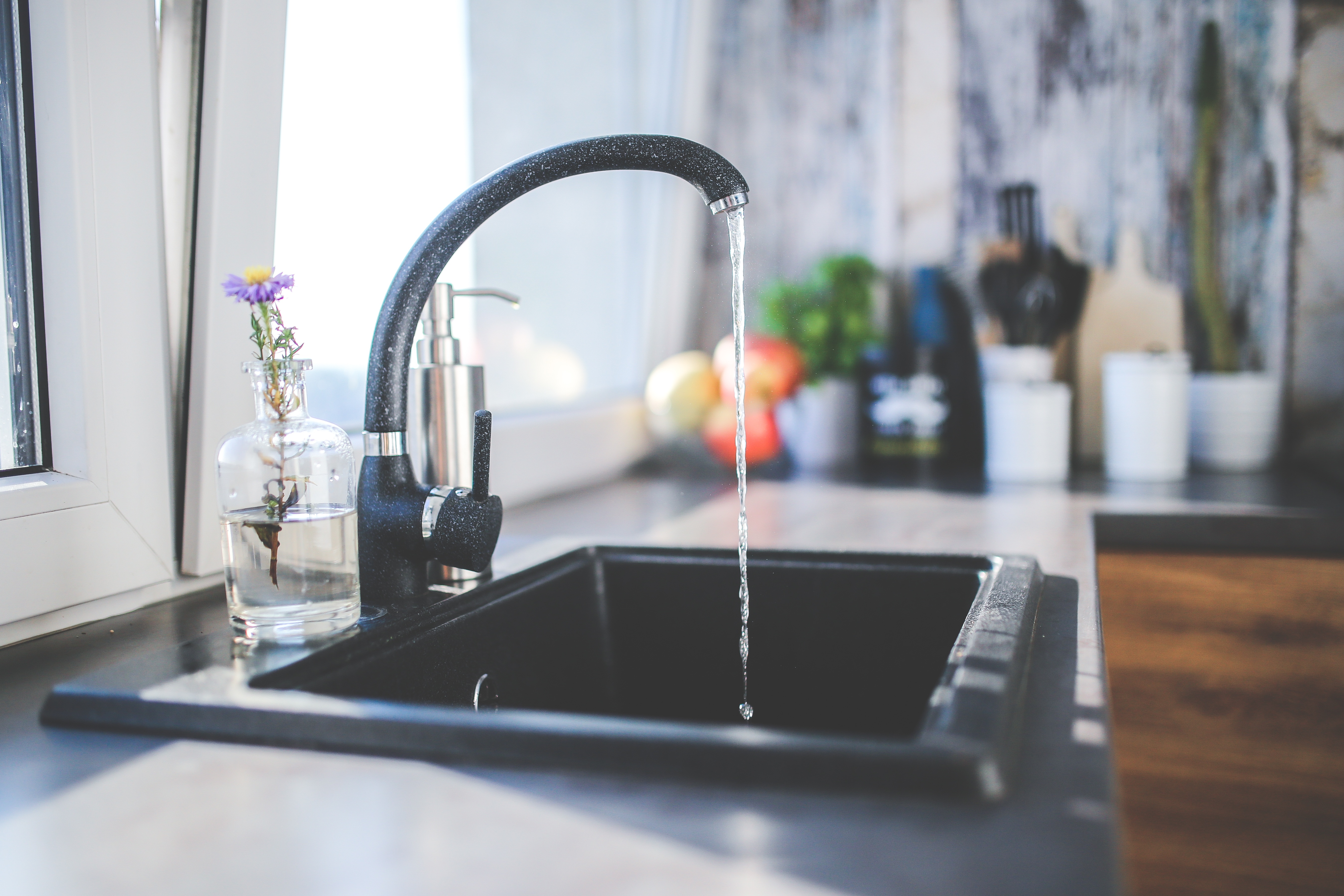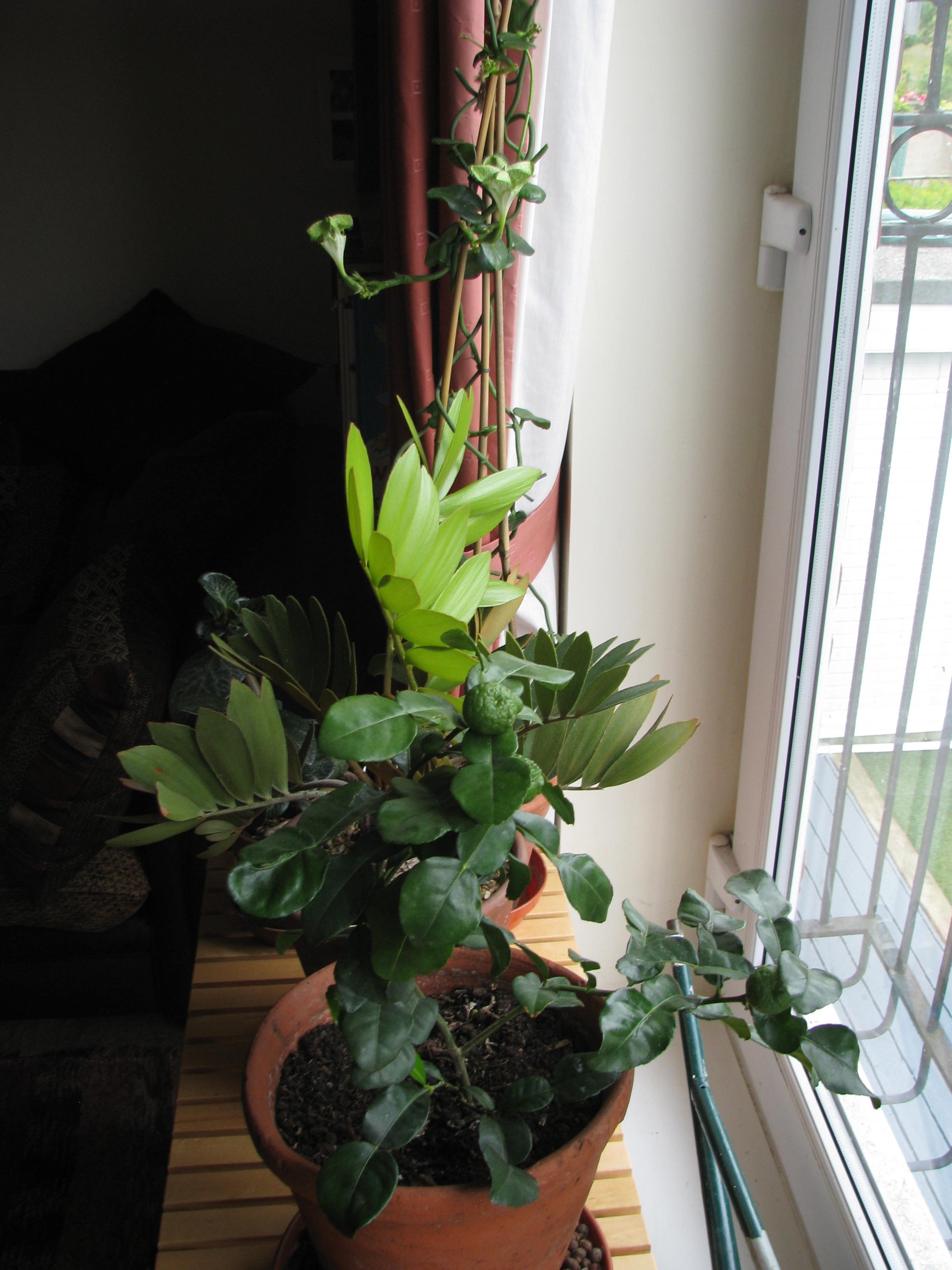Writing about houseplants the last few weeks has made me want to spruce up my office with some new plants. The ones I have are solid, dependable varieties that do well in low light conditions and benign neglect, but they don’t particularly inspire me anymore. It’s time to try something new.
Saturday, with the temperature reaching into the 60s, I decided to try my luck at one of our two big box stores.(Not many greenhouses around here.) Expecting to see racks of half dead philodendrons and snake plants, I was pleasantly surprised at the scope of the inventory, the attractiveness of the display and the vigor of the plants. Each plant was tagged and gave environmental requirements and care information. Not quite the level of professional greenhouses, but definitely exceeding my expectations. I left with two new specimens and intend to go back soon for more. My next task however, is learning how to take care of what I purchased.
Although individual plants have their own set of unique care requirements, those needs typically fall under six general areas — light, water, temperature, humidity, food and soil. Making sure that you understand and can meet those needs goes a long way in assuring the health and life of your plants.
LIGHT
The proper amount of light is one of the most fundamental aspects of plant health. With the right lighting, plants can withstand less than ideal conditions in other areas. Either inadequate or overly intense light can cause plant damage. Too much light can actually slow growth, bleach leaves and cause plants to stress and wilt. Too little light results in a spindly or twisted appearance or as the plant tries to lean in toward the light source,
Interpreting lighting terms on labels in stores can help avoid problems at home.
Bright/ direct: From a window; usually south facing
Indirect: Filtered sunlight or from a lamp
High light: 5 or more hours/day; within 6 feet of a window
Medium light: Several hours of bright or indirect light; from windows or bulbs
Low light: Need very little light; rooms with no windows but artificial lighting
WATER
Improper watering is probably responsible for more plants dying (both indoors and outdoors) than any other cause. Unfortunately there is no steadfast single rule to follow. How much water a houseplant needs depends on a variety of factors such as the type of plant, the size of the plant, the type of the pot, the size of the pot, the mass of the root ball, the room temperature, the humidity, the planting medium, the type of foliage and whether or not the plant is blooming.
Overwatering tends to have multiple harmful effects; it’s important to water only when the plant actually needs water. A common misconception is that if the surface of the potting medium looks and feels dry to the touch, then it is time to water. The surface may be dry, but the condition of the interior soil is what is really important. A better method than the surface touch is to check about an inch or inch and one half below the surface with a moisture meter (or your finger) to judge the moisture level. With experience, it’s possible to judge the need for water by lifting the pot and feeling its weight. A drier soil or potting medium becomes lighter.
Underwatering is also harmful. Plants that do not get enough water are also not getting the nutrients they need. They droop, their leaf tips turn brown or curl inward, older leaves begin to drop off and they grow slowly if at all. Severely under watered plants need to be carefully rehydrated from both the top and the bottom.
Tepid water from the tap is fine for watering houseplants; chemicals from city water systems will not harm plants. Collecting and using rainwater is also an option for watering indoor plants. Softened water can result in a salt build up which can, over time, prevents the plant from taking up water. Regardless of the type of water used, avoid soaking the foliage. When watering, make sure that water reaches the entire soil mass by slowly adding water until it drains through the pot. Discard any water standing in the saucer after an hour or so.
TEMPERATURE / HUMIDITY
For the most part, foliage plants tend to thrive at indoor temperatures of 65 to 75 degrees F during the day and 55 to 60 degrees F at night. Temperatures below 40 degrees F for extended periods of time will weaken and can kill houseplants as can hot or cold drafts. Make sure to move tender plants back from cold windows in the winter.
Dry winter air is stressful to most tropical plants, which prefer a relative humidity of 40 to 60 percent. Since most homes do not maintain a high indoor humidity, setting plants on pebbles in water filled trays can increase the humidity directly around the plants.
Keeping multiple plants together tends to naturally raise the humidity of an area, especially if it is a warm room. One study showed that three plants placed next to each other in a computer lab raised the humidity of the entire room by 10%. Some sources suggest misting plants to increase humidity, but be careful not to saturate the foliage because it can cause disease problems.
FOOD
Plants, like humans, need food to survive. Unlike humans though, there are times when plants do not need supplemental nutrition. It is best not to feed during periods of dormancy, such as in winter, or when plants are living in poor growing conditions. Pushing new growth in either circumstance can stress plants and cause them to decline or even die.
There are several common forms of fertilizers on the market. However, for most houseplants, either liquid or slow release are both effective and easy to use. Liquid forms are mixed with water and delivered to the plants either weekly or every other week. Using liquid fertilizers makes it is easy to control how much, where and when the nutrients are deposited.
Slow release fertilizers are formulated with a coating that dissolves and allows the fertilizer to slowly leach into the soil. They are extremely easy to apply and since they are long lasting, they are considered by many to be more convenient. They do tend to be more expensive, but since they are applied infrequently, the cost factor is insignificant over time. Regardless of which type of fertilizer you choose to use, make sure that you follow the label directions. If you over-fertilize, you do run the risk of burning the roots; under fertilizing is safer for the plant and the environment than over fertilize.
Unless you are growing specialty houseplants, for example African violets or orchids, the majority of varieties will do well on general, all-purpose houseplant fertilizers. They tend to include a good balance of nitrogen for healthy foliage and phosphorus for root growth as well as potash for bloom and all of the necessary micronutrients.
SOIL
Until plants become pot bound or they have lived in the same potting mixture for several years, it is not necessary to repot them. Aesthetics however, are often the deciding factor as to when a plant needs to be repotted. Most of us want to immediately repot the plant in something more attractive than its original plastic container. Since repotting puts a strain on plants, growers often advise waiting a while before repotting newly purchased plants. (They typically don’t need fertilizer for at least six weeks either.)
Commercially available potting mixtures are ideal for most houseplants. Although they contain little if any actual soil, they supply plants with their basic needs. They anchor the plant, they retain moisture without remaining soggy and they suppress soil-borne diseases. Soil mixtures tend to be light weight which allows for maneuverability. Further, high quality potting mixtures don’t give off unpleasant odors when wet. Finally, old soil from repotted plants can be safely mixed into the outdoor garden, adding a feast of organic matter for the outdoor microorganisms to devour.
Whether you are looking for unusual additions to your current collection, or beginning a brand-new indoor garden, figuring out which plants best suit your environment and your expertise can be a daunting task. Join us next time as we share our top picks for 2019. See you then.














